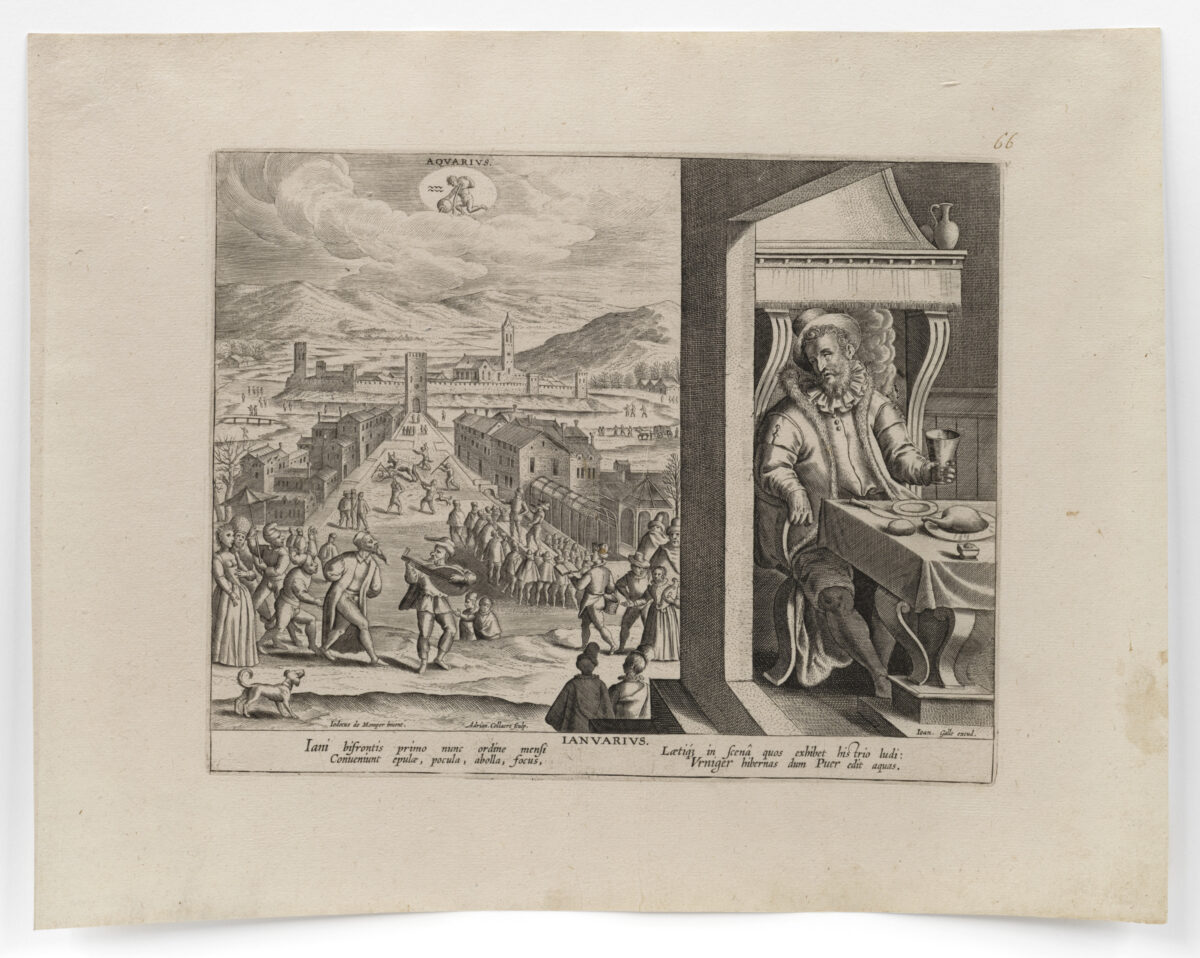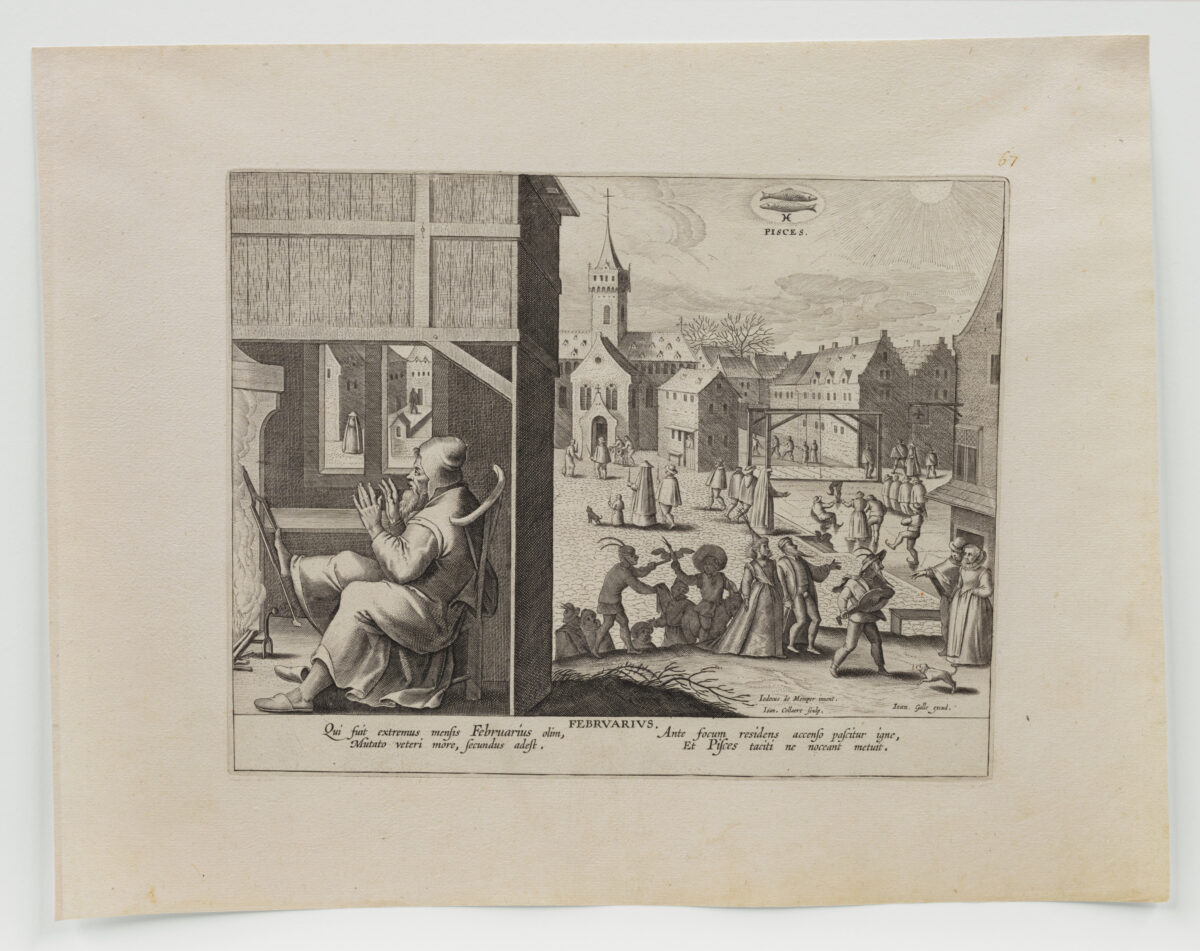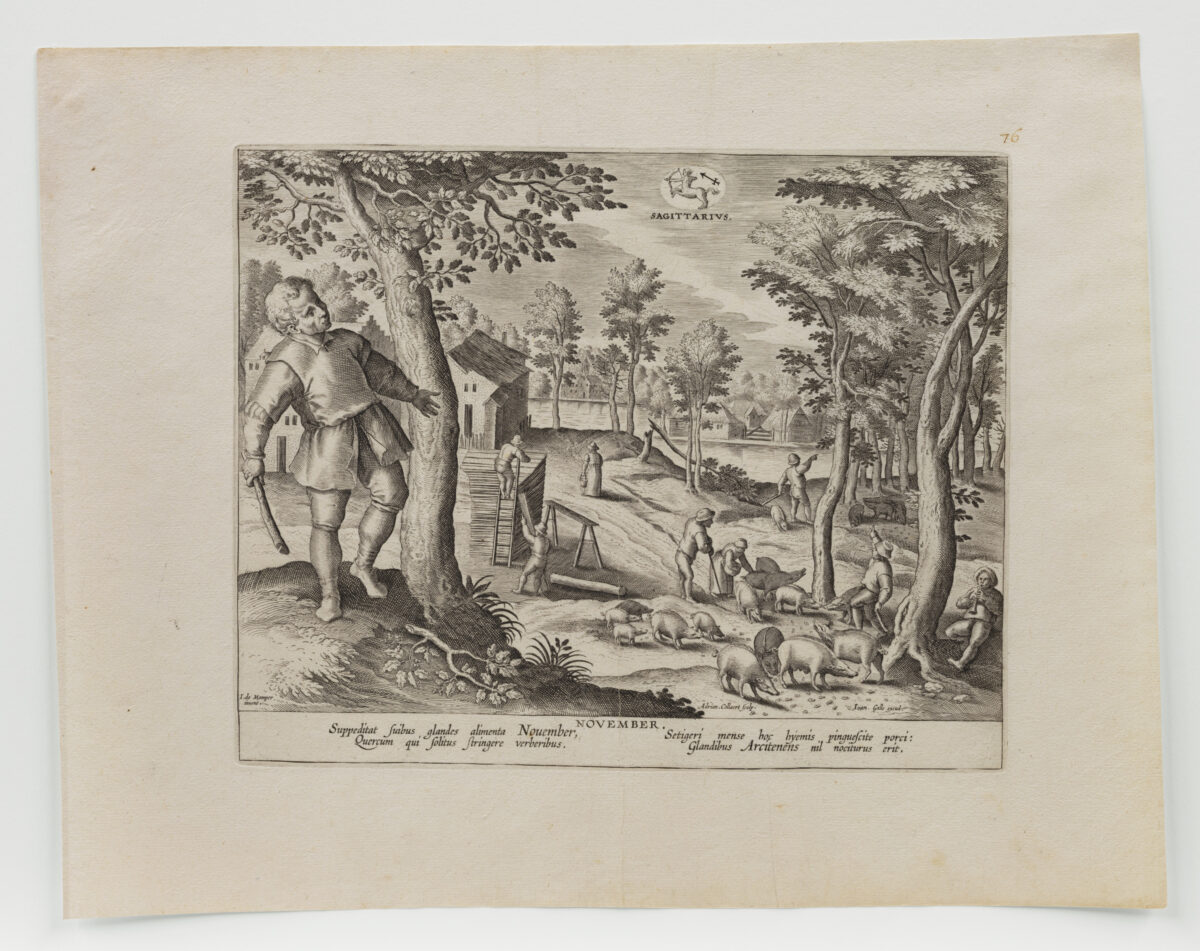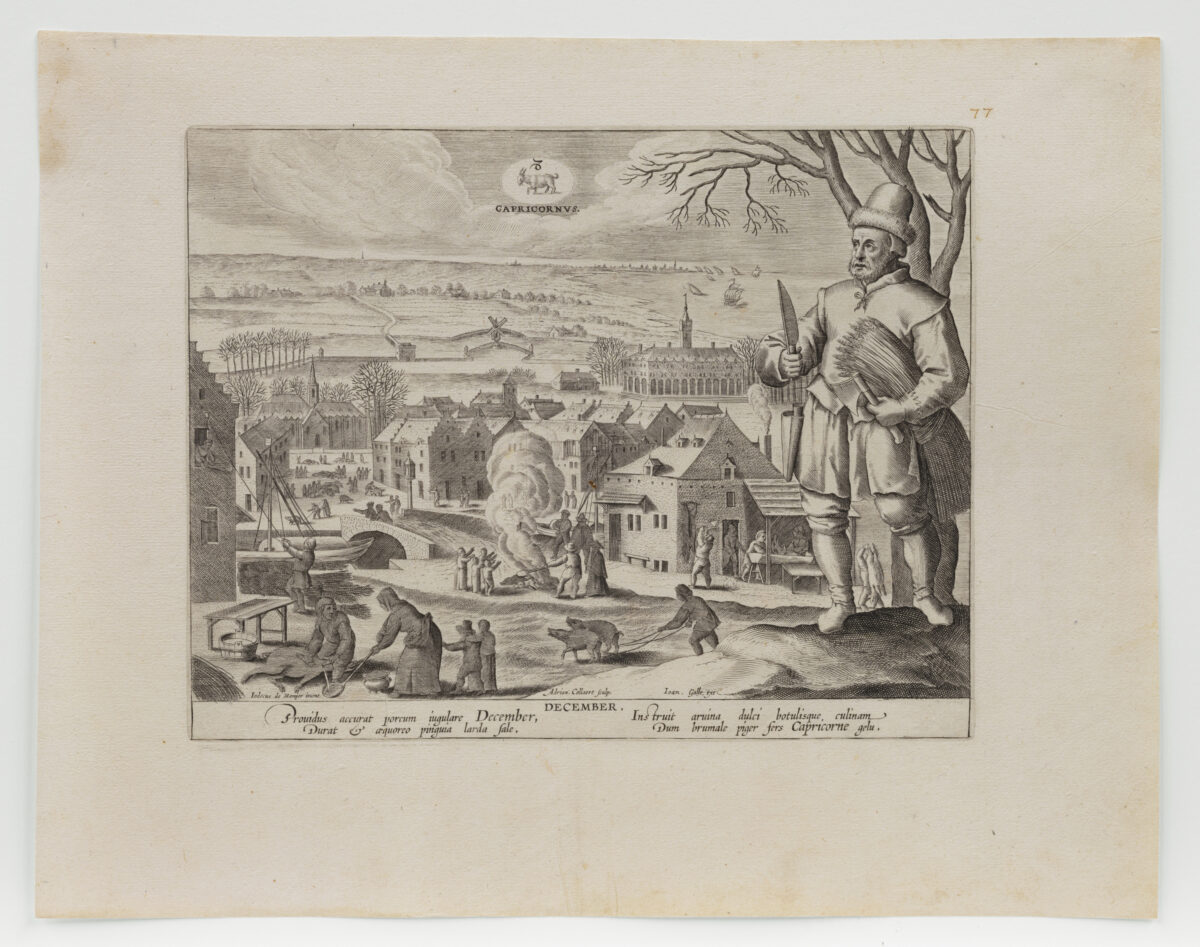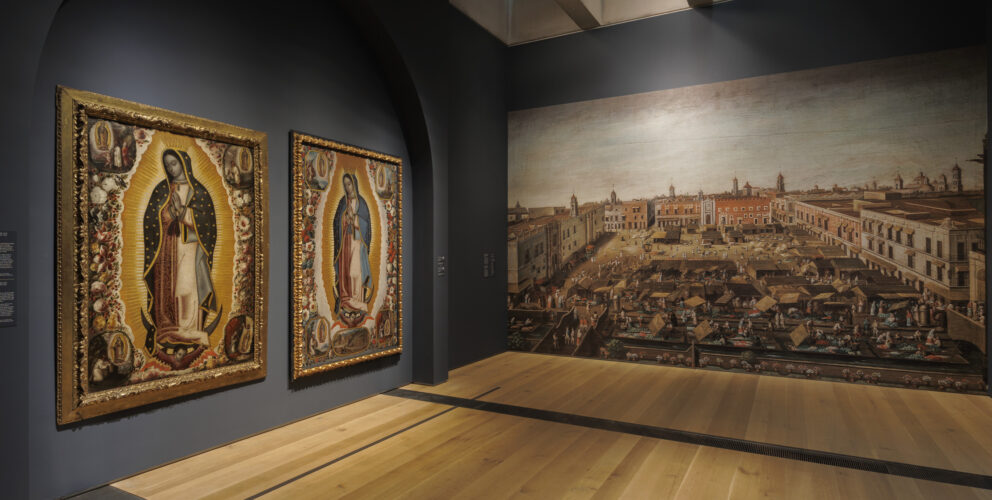Installation view of Art and Imagination in Spanish America, 1500–1800: Highlights from LACMA’s Collection
Four prints from the Saint Louis Art Museum’s collection were added to the travelling exhibition Art and Imagination in Spanish America, 1500–1800: Highlights from LACMA’s Collection, on view through September 1. The SLAM additions encourage viewers to consider the culture of art copying during these centuries of conquest and expansion. Art and Imagination originally featured 102 works, which were curated by Ilona Katzew at the Los Angeles County Museum of Art. When SLAM curators were preparing for the exhibition’s arrival, they were pleasantly surprised to discover related prints in the Museum’s collection.
The four SLAM prints, created by Flemish artist Adriaen Collaert (1560–1618) and his younger brother Hans Collaert the Younger (1566–1628), likely inspired Puebla artist Antonio de Espinosa (active c.1650–1700), whose work is featured in the LACMA exhibition. Flemish artist Joos de Momper the Younger (1564–1635) created the drawings the prints are based on. Flemish prints depicting the 12 months were derived from calendar miniatures in medieval books of hours and were popular in 16th- and 17th-century Flemish art, according to research in the exhibition’s catalogue, written by Katzew. These works displayed labors associated with the times of the year, often alongside zodiac signs to signal the corresponding months.
-
Adriaen Collaert, Flemish, 1560–1618; after Joos de Momper the Younger, Flemish, 1564–1635; published by Joannes Galle, Flemish, c.1600–1676; January, after 1586; engraving; sheet: 11 5/8 x 14 7/8 inches, plate: 8 1/4 x 10 5/16 inches; Saint Louis Art Museum, Funds given by Hope and Julian Edison 159:2011.66
-
Hans Collaert the Younger, Flemish, 1566–1628; after Joos de Momper the Younger, Flemish, 1564–1635; published by Joannes Galle, Flemish, c.1600–1676; February, after 1586; engraving; sheet: 11 5/8 x 14 7/8 inches, plate: 8 1/8 x 10 3/16 inches; Saint Louis Art Museum, Funds given by Hope and Julian Edison 159:2011.67
-
Adriaen Collaert, Flemish, 1560–1618; after Joos de Momper the Younger, Flemish, 1564–1635; published by Joannes Galle, Flemish, c.1600–1676; November, after 1586; engraving; sheet: 11 5/8 x 14 7/8 inches, plate: 8 3/8 x 10 5/16 inches; Saint Louis Art Museum, Funds given by Hope and Julian Edison 159:2011.76
-
Adriaen Collaert, Flemish, 1560–1618; after Joos de Momper the Younger, Flemish, 1564–1635; published by Joannes Galle, Flemish, c.1600–1676; December, after 1586; engraving; sheet: 11 5/8 x 14 7/8 inches, plate: 8 1/8 x 10 3/8 inches; Saint Louis Art Museum, Funds given by Hope and Julian Edison 159:2011.77
Espinosa likely combined several sets of well-known Flemish prints, by artists such as the Collaert brothers and engraver Aegidius Sadeler II (c.1570–1629), to create his series of oil paintings. The art of copying was a lucrative practice between 1500 and 1800. To some, a well-made copy was more precious than an original because it showcased an artist’s ability to expertly reconfigure source material. Spanish painter and theorist Francisco Pachecho (1564–1644) stated that “invention ensues from good ingenuity, from having seen much, and from imitating, copying, and combining many things,” as detailed in the exhibition catalogue. The art of copying was advantageous for all artists involved, as it often spread the artists’ fame and reputation.

Antonio de Espinosa, Mexico; The Twelve Months of the Year, January–February (Los doce meses del año, enero-febrero), second half of the 17th century; oil on canvas: 31 7/8 x 38 inches; Los Angeles County Museum of Art, Purchased with funds provided by the Bernard and Edith Lewin Collection of Mexican Art Deaccession Fund 2024.72.01; photo © Museum Associates/LACMA

Antonio de Espinosa, Mexico; The Twelve Months of the Year, November–December (Los doce meses del año, noviembre–diciembre), second half of the 17th century; oil on canvas: 31 7/8 x 38 inches; Los Angeles County Museum of Art, Purchased with funds provided by the Bernard and Edith Lewin Collection of Mexican Art Deaccession Fund 2024.72.06; photo © Museum Associates/LACMA
Espinosa’s portrayals of January and February, and November and December, demonstrate the artist’s skillful combination of two compositions into one painting. January–February includes the distant mountains and village street visible in Adriaen Collaert’s January, as well as the ice skaters visible in Hans Collaert the Younger’s February. November–December combines the pigs and herders from the elder Collaert’s November print and the smoke billowing from a roasting pig from his December print. The four Flemish prints are on view near Espinosa’s oil paintings in the SLAM exhibition galleries.
“We were delighted to draw on our exceptional collection of Flemish and Netherlandish prints to give viewers a sense of the material qualities of the prints and highlight the differences in scale and color,” said Clare Kobasa, SLAM’s associate curator of prints, drawings, and photographs, who is co-curating the St. Louis presentation of the exhibition.

Antonio de Espinosa, Mexico; The Twelve Months of the Year, May–June (Los doce meses del año, mayo–junio), second half of the 17th century; oil on canvas: 31 7/8 x 38 inches; Los Angeles County Museum of Art, Purchased with funds provided by the Bernard and Edith Lewin Collection of Mexican Art Deaccession Fund 2024.72.03; photo © Museum Associates/LACMA
Espinosa also introduced intriguing variants to his series. The artist supplemented the existing subjects in the prints by incorporating facets of Puebla culture. For example, the May–June canvas features local figures dressed in contemporary Mexican fashions. A passage from the exhibition catalogue describes the addition of Puebla fashion:
“In the circle of aristocratic women admiring the flower wreaths . . . instead of the ruff collar, peplum bodice, and tall updos fashionable in the Renaissance, Espinosa depicted the figures wearing open necklines and lace collars embellished with pearls (valona cariñana) popular in New Spain, layered sleeves displaying an abundance of colored fabrics, and loose curls.”
The strategic addition of these details made the works more relatable for his patrons and enabled him to translate the complete set into the context of his culture.
By the mid-1600s, paintings like Espinosa’s The Twelve Months of the Year series were fashionable in elite homes across Europe, according to the exhibition’s catalogue. This Flemish art style was brought to Puebla largely by Bishop Juan de Palafox y Mendoza (1600–1659) and two artists in his staff, Pedro García Ferrer (1583–1660) and Diego de Borgraf (1618–1686).
Many 17th–century Puebla painters’ works were characterized by “a distinct Flemish-inspired sensibility,” featuring vibrant colors and an expert mixture of landscapes and figures. Espinosa studied under de Borgraf in 1649, so it is probable that Espinosa was exposed to prints of months of the year during this apprenticeship.
